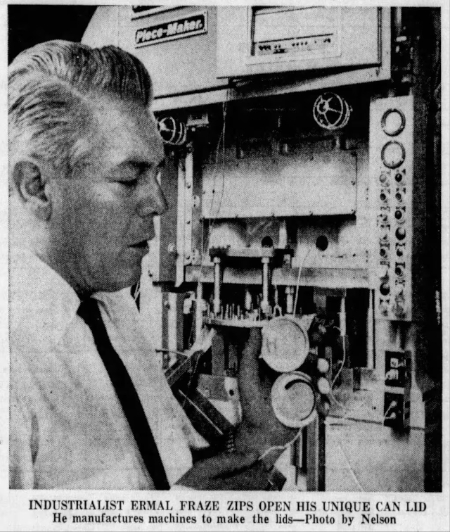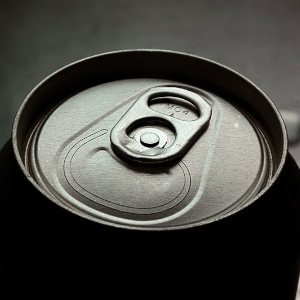The pop-top can is one of the most revolutionary developments of our time in food packaging. But few folks know who invented it, or how it came to be. Much less how the pop-top can became the universal standard…

Picture it…
Dayton, Ohio, 1959.
The Aluminum Co. of America (ALCOA) was looking for a new way to package fruit juices. And they asked Ermal Fraze, Pres. of the Dayton Reliable Tool & Manufacturing Co., to create it for them.
They wanted a can consumers could open without the need of a can opener…
Fraze dove right in
His job was to build a fully-automated machine that could seal the cans. And the can ALCOA wanted had to have a ‘ring tab’ that consumers could use to open it. No tools but their thumb and index finger required. The challenge stumped him, at first. He stayed up nights wracking his brain over it. Then, one night…
“I was only going to work on this thing for an hour and hoped to go back to bed,” Fraze recalled. “But I was up all night and it came to me — just like that. It was all there. I knew how to do it so it would be commercially feasible.”
He went through several designs, getting closer to perfection each time, until he was ready to present ALCOA with the prototype of the pop-top we know today.
ALCOA bought the design in 1961. And by 1963, they were ready to begin selling pop-top cans to beverage bottlers.
Not an auspicious début
Initially, many breweries ALCOA approached weren’t interested. A short-sighted position, considering the eventual success of the pop-top.
But one regional suds maker, the Pittsburgh Brewery Co., decided to test the tops on 300,000 cans of its flagship Iron City Beer. The innovation was an instant hit with beer-drinkers. And the rest, as they love to say, is history.
Inspired spin-offs
Among the first adopters of the pop-top were the frozen orange juice industry, the condensed soup sector and the coffee roasters. The pop-top actually inspired development of the ‘panel pull-out’ top where you lift the tab and the whole top tears out of the can. Great for solids like ground or instant coffee. And later for canned fish an other products.
Many different names
The pop-top went through many iterations before it reached the form we know today. And it also went through a number of name changes. It was variously known as the ‘ring-pull’, the ‘tab-top’, the ‘pull-tab’ and the ‘zip-top’ before the industry (and society as a whole) settled on ‘pop-top’.
Today…
The pop-top has invaded almost every corner of the metal can sector. Industry sources estimate more then 400 billion pop-top cans are sold every year world-wide – mainly containing beverages. And estimates range as high as 630 billion a year by 2030.
That doesn’t count the ‘panel pullout’ branch of the pull-tab family.
Some folks collect tabs…
There have been charity fundraising campaigns over the years that asked folks to ave and contribute the tabs from pop-top cans. Sponsors offered a cetrain amount of money per tab. Or hundred tabs. Or whatever. It was a big thing for a while back in the 60s and 70s. There were also contests that asked folks to collect milk bottle tops and soft drink bottle caps.
According to Cleveland.com, the tabs actually have some recycle value. And the website offers these ‘amazing facts:
- A million tabs would weigh about 800 pounds. It takes more than 1,200 tabs to equal a pound / 2,640 per kg.
- And about 63,360 pull tabs laid end to end would stretch a mile.
- The recycle price of tabs averages about $0.55 lb. / $1.21 kg, ranging between $0.30 lb. / $0.66 kg and $0.75 lb / $1.65 kg, depending on the current scrap value of aluminum.
- Snopes.com says a million pull tabs have a recycle value of about $366. A hundred have a scrap-metal value of about 3.5 cents.
My take
Where would we be without the pop-top can – or the panel pullout – today?
I remember, back when I was first married, that if you were stumped on what to get someone for a kitchen shower gift, you could always spring for an electric can opener. They’re museum curiosities today. The odd time you have to open an old-fashioned rolled-rim can, you’ll reach for the hand opener you inherited from Mom or Grandma.
Ermal Cleon Fraze died on October 28, 1989 leaving behind his wife, Martha; two sons, Mark and Terry; and three grandchildren, all of Dayton. He was 76.
Remember him next time you tear open a cold one…
~ Maggie J.

